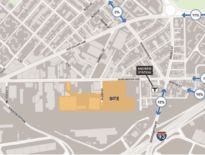A new analysis from investment bank Keefe, Bruyette & Woods shows that small- and mid-cap stock banks in the Northeast had similar credit quality during the first quarter as other small and mid-sized banks in the broader group that KBW analyzes, despite early impacts from the COVID-19 pandemic.
KBW said banks in the Northeast operated in some of the states most impacted by the coronavirus pandemic. The analysis included about 50 banks in New England, New York, Pennsylvania and New Jersey,
“COVID-19-related indicators such as risky loan segments, loan deferrals and PPP participation were all essentially in line with the broader universe,” KBW analyst Collyn Gilbert wrote in the report.
Metrics analyzed in the report included loans exposed to industries most affected during the coronavirus crisis. Commercial real estate loan portfolios were deemed the most risky, including loans tied to hotels, restaurants, travel and leisure and retail. The five banks with the most exposure to risky loan segments included two Massachusetts-based banks: Berkshire Bank and Brookline Bancorp, the holding company for Brookline Bank and Bank RI.
Brookline’s exposure to retail was 9 percent, and Berkshire’s exposure was 11 percent. The median exposure to retail was 7 percent for Northeast banks and 6 percent for KBW’s small- and mid-cap universe.
In addition to the categories at risk, Brookline identified 14 percent of its loan portfolio in an “other” category, including $425 million in laundromat loans and $358 million in specialty vehicle and tow truck loans. Gilbert said that these segments could see a resurgence in activity as shelter-in-place orders are lifted.
Berkshire Bank had $411 million in “other” loans, 8 percent of its portfolio. This category included loans tied to leisure, recreation and amusement, and Gilbert said their performance could lag when regional economies begin opening back up.
KBW also looked at loan deferral trends when reviewing credit quality, though Gilbert pointed out that deferrals under the CARES Act are not characterized as troubled debt restructuring.
“Tracking the performance of these deferred loans, especially those at the top and bottom ends of these ranges, will be key in assessing both broader economic risks, as well as the individual company risks tied to these borrowers,” Gilbert said.
The median share of loans in deferral at Northeast banks was 12 percent. Cambridge Trust Co. was among the banks with the smallest percent in deferral at 4 percent.
Gilbert pointed out several possible outcomes from banks’ participation in the Paycheck Protection Program, including providing – at least initially – a layer of credit insurance for many commercial borrowers, increasing provisions and reserves from income generated from accelerated payoffs, expanding customer bases and showing banks’ operational and processing strengths.
“However, with all opportunities come risk, so we will pay close attention to the performance of these PPP loans, and monitor the timing and magnitude of forgiveness of these loans during [the second and third quarters of 2020],” Gilbert said.
She added that many banks anticipate about 80 to 85 percent of PPP loans would be forgiven.
Bridgeport, Connecticut-based People’s United Bank was ranked third in terms of the total amount of PPP loans disbursed at $2.1 billion at the time of KBW’s analysis, an amount representing 5 percent of its first quarter loans.
People’s United in a press release on May 28 released its most recent PPP numbers, reporting more than 16,000 PPP loans issued worth over $2.5 billion.




 |
| 




